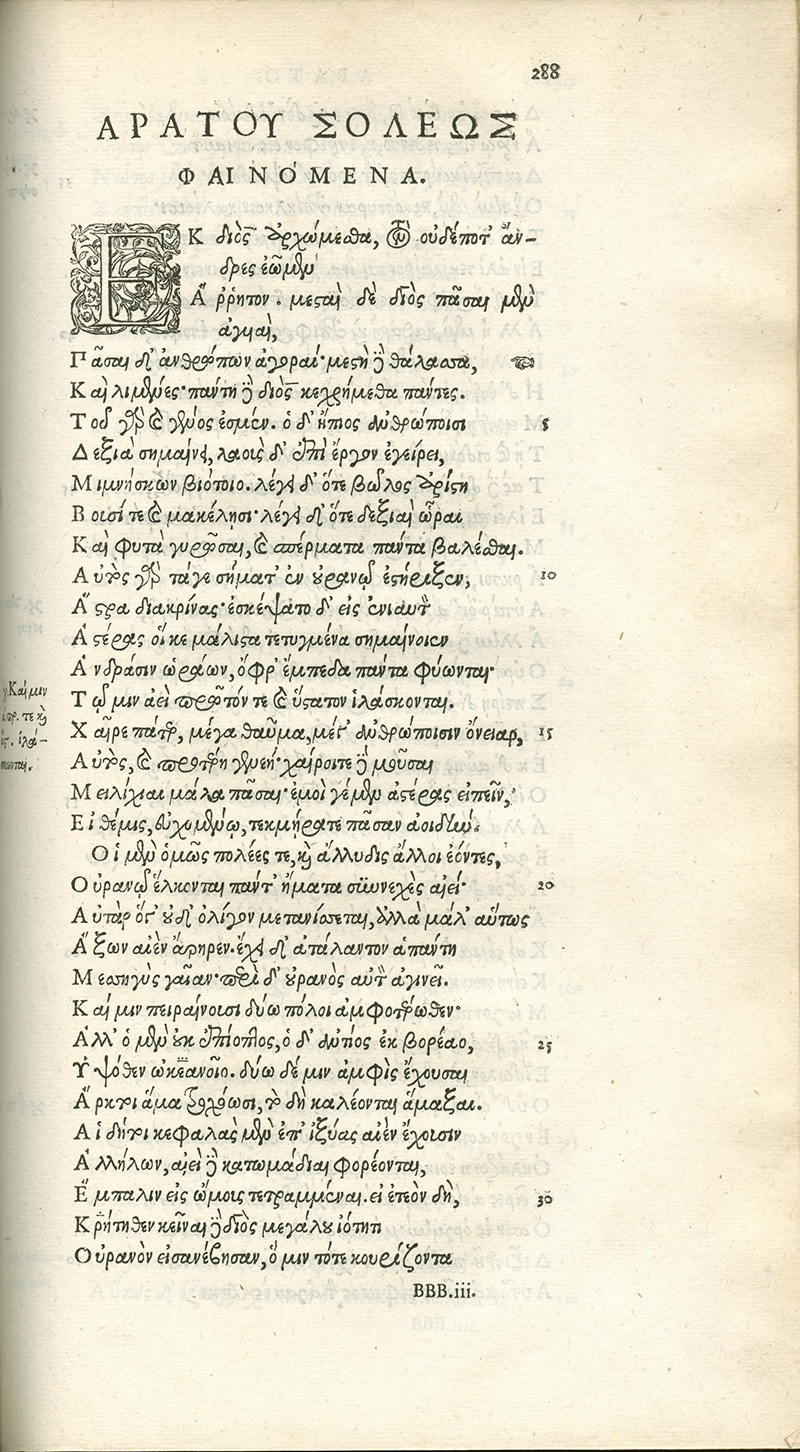Aratus’ Phaenomena

- Aratus, Phaenomena 1-32
- Hoi tēs hēroikes poiēseōs proteuontes poiētae, kai alloi tines. Homēros, Hēsiodos, Orpheus, Kallimachos, Aratos, Nikandros, Theokritos, Moschos, Biōn, Dionysios, Kolouthos, Tryphiodōros, Mousaios, Theognis, Phōkylidēs, Pythagorou chrysa epē.
- Ed. Henricus Stephanus (Henri Estienne II). 2 vols. Geneva: Henricus Stephanus, 1566.
This is a page of a 1566 edition by Henri II Estienne (1528/31-1598), which collects poems of Greek poets, mostly in hexameters or elegiac meter. Henri II Estienne (or Henricus Stephanus, in its latinized form) is one of the most important Renaissance editors of classical texts. He belongs to a family of publishers (founded by his father, Robert I Estienne, 1503-1559) based in Geneva. In this magnificent collection of epic and didactic poets, Henri II Estienne included one of the most famous didactic poems of antiquity, the Phaenomena by Aratus (ca. 300-240 BCE). Its title, Phaenomena in Latin or Phainomena (Φαινόμενα) in Greek, means “appearances” or “visible phenomena”; indeed, this poem describes what “appears” in the sky, that this, the celestial phenomena. The poem was composed in ca. 275 BCE at the Macedonian court of Antigonus II Gonatas in Pella. Aratus begins with a proem dedicated to Zeus, who is praised as the god who takes care of us humans by showing celestial “signs” for our daily life and needs (1-18). In the first part of the poem following the proem, Aratus describes the constellations in the northern and southern hemisphere visible from Athens (19-461), the celestial circles (462-558), the so-called “simultaneous risings and settings” (559-732), that is, which constellations rise or set in connection with the rising of each of the twelve zodiac constellations (the simultaneous risings and settings were useful for counting the hours at night), and finally the days of the month and times of the year (733-757). In the second part of his poem he discusses weather signs (758-1141), and in the conclusion he restates the importance of celestial signs (1142-1154). The first astronomical part of his poem is based on a treatise on stars and constellations by the mathematician and astronomer Eudoxus of Cnidus (ca. 390-337 BCE), while the second part, on meteorological signs, probably used as a source the work On Signs attributed to Theophrastus (ca. 370-286 BCE), a pupil and successor of Aristotle.